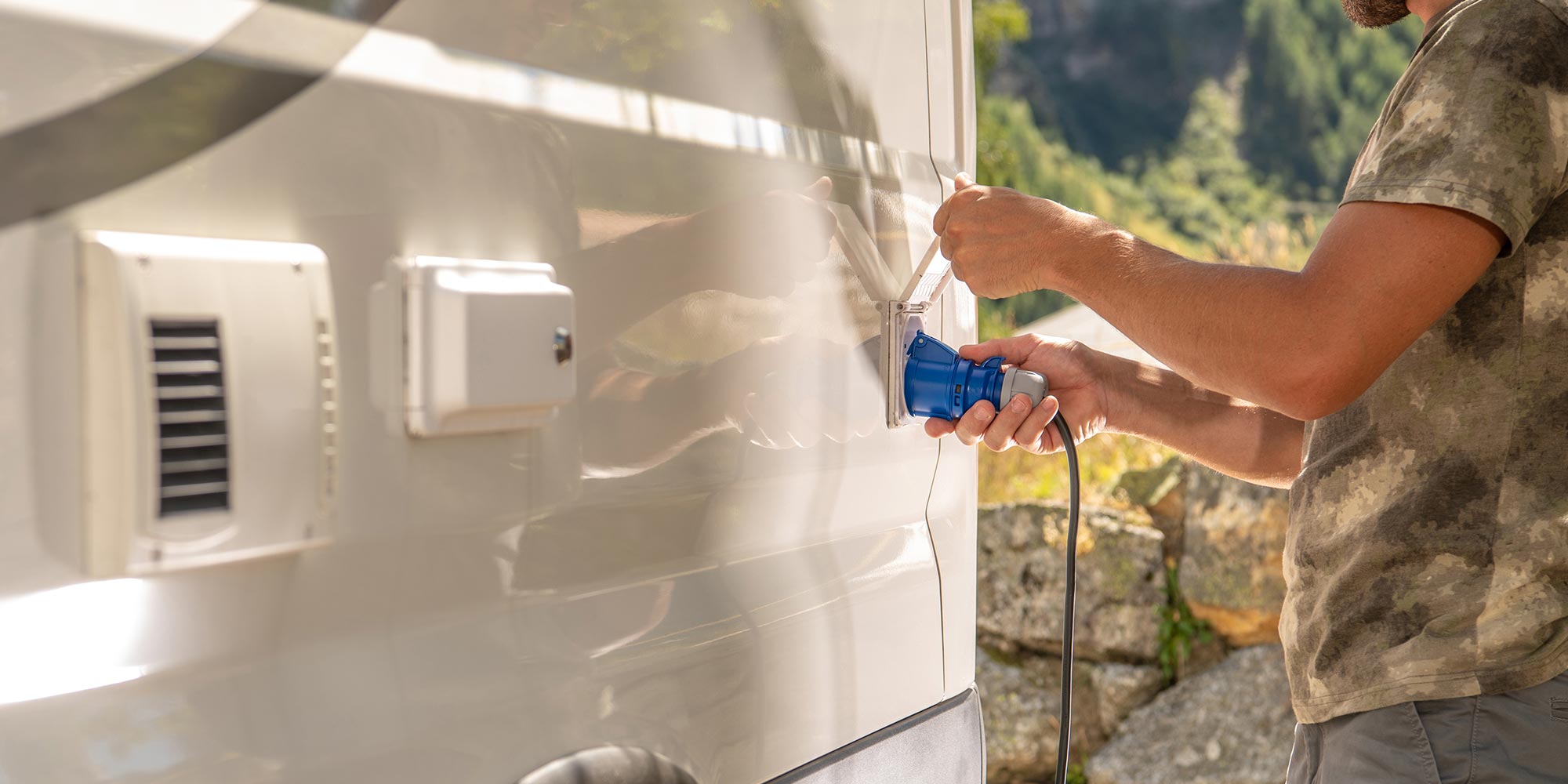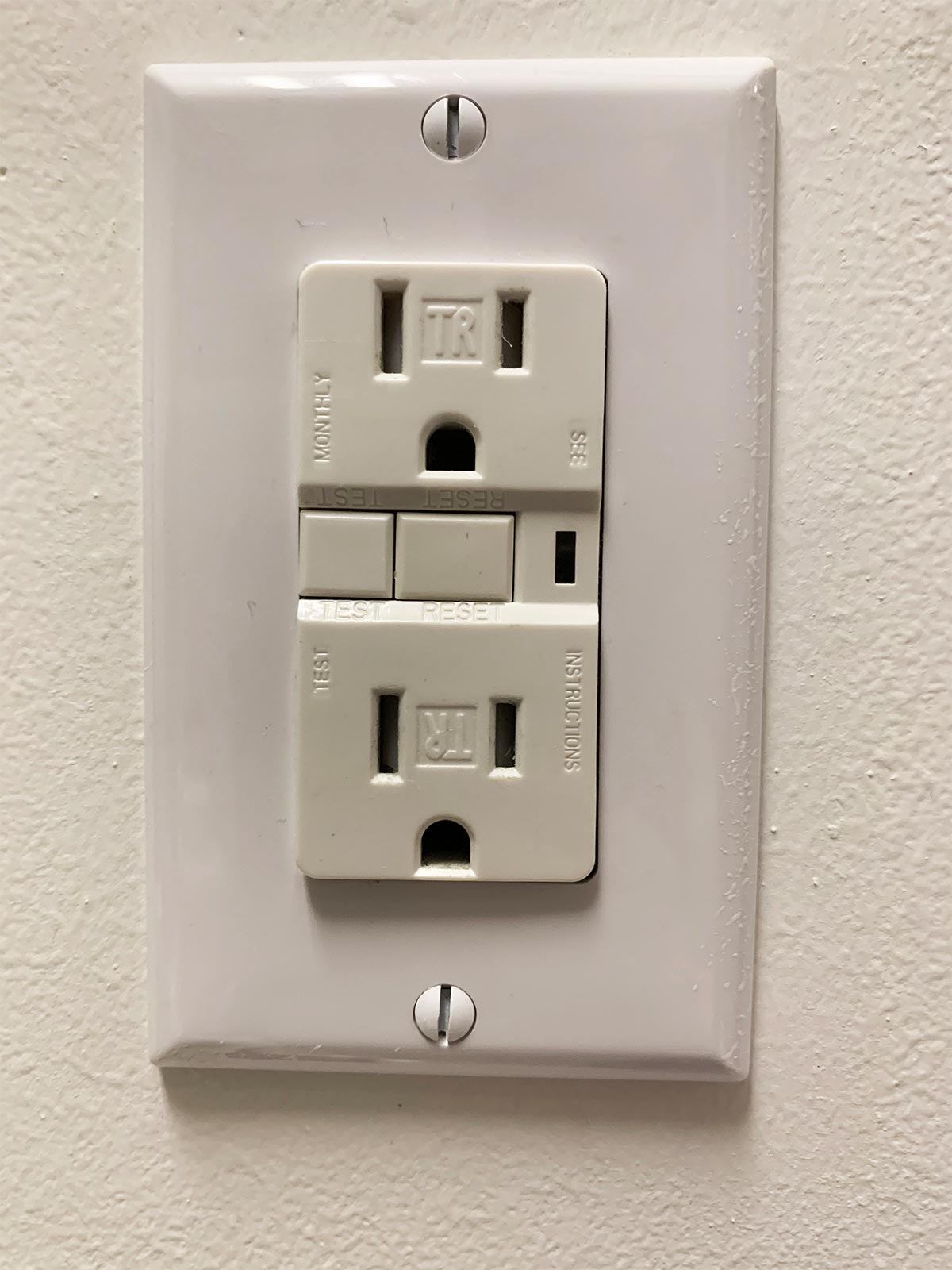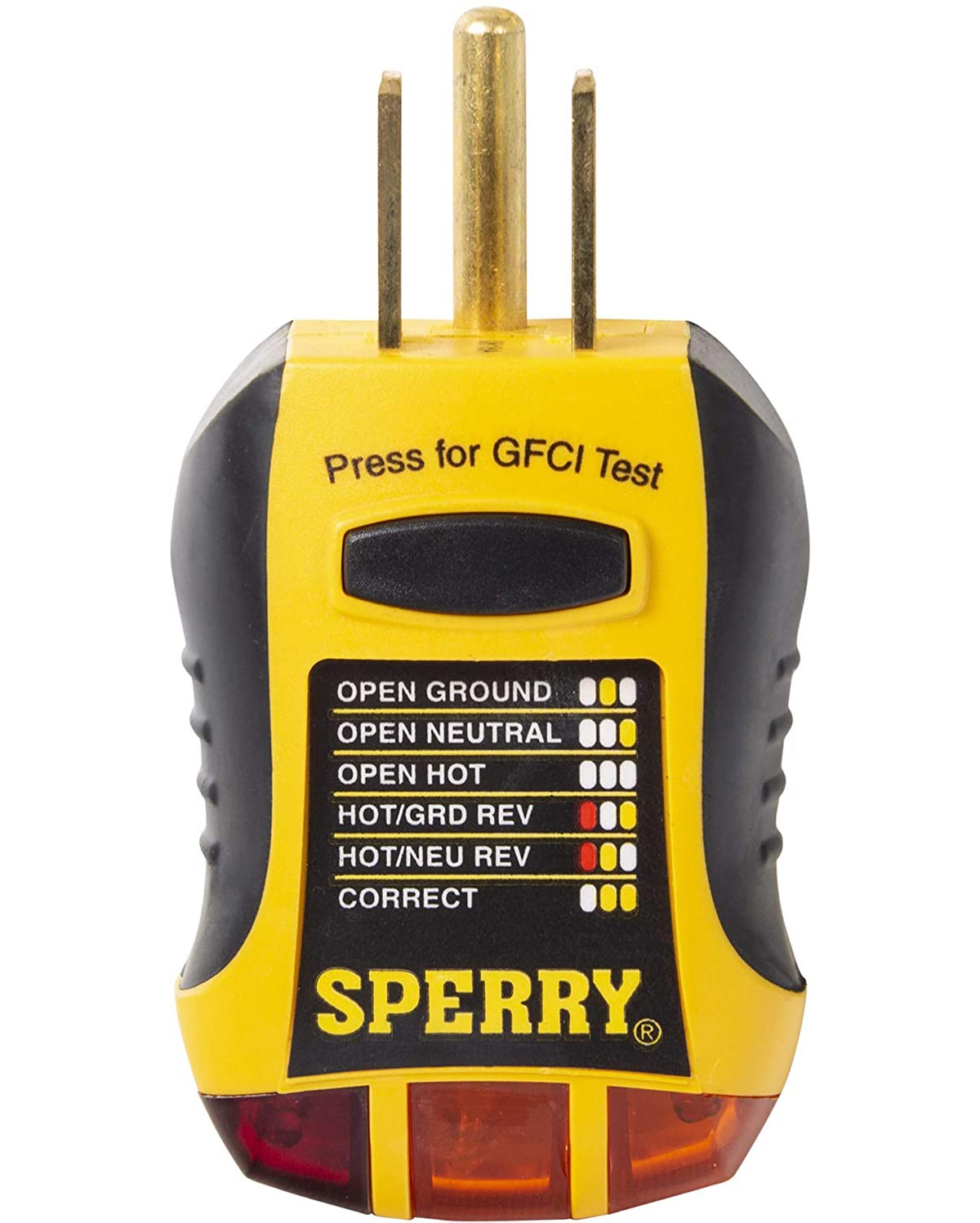What is a GFCI Receptacle?

On the electrical front, one thing you’ll likely read and hear about frequently is GFCI, which stands for Ground Fault Circuit Interrupter. It sounds complicated, but you’re around them every day–a GFCI is one of those 120-volt AC receptacles in your home or RV that has a re-set button on it, usually between the two outlets. According to code, GFCI receptacles must be used in the bathroom, within six feet of any sink, and in the case of an RV, on the exterior. In this latter instance, GFCI does not include single outlets for the refrigerator. GFCI can also protect an entire circuit with outlets wired in series after the GFCI receptacle, or with a GFCI circuit breaker, which you may also have in your home or RV.
A ground fault occurs when there is a grounding path from an appliance, tool or electrical system. The current may then take the path of least resistance to the ground through your body, which can result in a nasty shock if you’re lucky, serious injury or death if you aren’t. The GFCI is a fast-acting breaker designed to shut off electrical power in the event of a ground fault in as little as 1/40th of a second, according to Occupational Safety and Health Administration (OSHA). It works by comparing the amount of current going to–and returning from–equipment or appliances along the circuit conductors. When the amount going differs from the amount returning by approximately 5 milliamperes, the GFCI interrupts the current. If it’s working properly, a GFCI is engineered to trip as soon as a faulty device is plugged in.


There are two ways to test a GFCI. First, every GFCI receptacle or breaker has TEST and RESET buttons. These allow testing of the device itself. Alternatively, most receptacle testers on the market have a GFCI test button, which means you can test receptacles throughout the RV to see which are on the GFCI, or if the GFCI is working properly. A receptacle tester, along with a non-contact voltage tester and multimeter like this kit, should be part of your RV tool set.
If all the AC power in your RV trips out, it’s probably not a GFCI in your RV. Check for incoming power.
Already a Subscriber? Click here for Access to the Full Issues.

